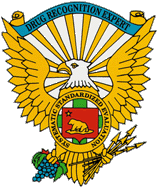The Drug Recognition Expert (DRE) Program and procedures were initially developed in the 1970s by traffic enforcement officers of the Los Angeles Police Department. This procedure trains selected officers to utilize a standardized twelve step evaluation procedure, that enables the officer to determine whether an individual is under the influence of drugs, and then to determine the type of drug causing the observable impairment. Importantly, the DRE procedure enables the DRE to rule in (or out) many medical conditions, such as illness or injury, that may be contributing to the impairment. Although the primary focus of the DRE procedure is driving under the influence (DUI) enforcement, the procedures have been applied to Health and Safety Code violations, probation, parole, drugs in the workplace issues, and other areas where accurately identifying the drug-impaired individual is relevant.
The accuracy of the procedure used by DREs has been validated in two controlled studies. In 1984, a research study at Johns Hopkins University showed that Los Angeles DREs were able to accurately distinguish between the drug-impaired and non-drug-impaired individual. A subsequent Field Validation Study (173 case study) sponsored by the National Highway Traffic Safety Administration in 1985 evaluated the accuracy of the DRE procedures in actual arrest situations. Again, the DREs were very successful in identifying both the drug-impaired individual and the class(es) of drug(s) causing the impairment.
The success of these studies has precipitated the dissemination of DRE techniques to 36 states plus the District of Columbia. In addition, officers in Canada, Australia, Norway, Germany and Sweden have been successful in adapting DRE skills to their jurisdictions.
The DRE procedures have been subject to numerous defense motions challenging the admissibility of DRE testimony. Thus far, courts in California, New York, Arizona, Minnesota, Colorado, and Florida have upheld the admissibility of DRE evidence. As an example of DRE's acceptance in court, the Los Angeles City Attorneys Office has estimated that 95% of those charged with driving under the influence of drugs are convicted in LA courts.
Today, approximately 4,000 nationwide are certified as DREs by the International Association of Chiefs of Police (IACP). All DREs can trace their expertise back to the 16 Los Angeles DREs that developed the initial formal curriculum in 1986. It has been through the continued involvement of the LAPD that DRE has achieved its international stature. The LAPD has been instrumental in the expansion of DRE out of Los Angeles. LAPD DREs are called upon time and time again to assist in the expansion of the program to new sites. In addition, LAPD DREs have provided expert testimony on the scientific bases of DRE around the country.
Los Angeles DREs have also been responsible for training prosecuting attorneys throughout the country to effectively prosecute the drugged driver. Los Angeles DREs regularly provide expert advice to prosecutors, administrators, toxicologists, and traffic safety professionals on issues related to drug abuse.
Not only does the Los Angeles Police Department's DRE Unit conduct and coordinate DRE training for the 350 LAPD DREs, it oversees DRE activities for over 60 California law enforcement agencies. In 1995, the LAPD DRE Unit hosted seven local DRE courses, involving approximately 200 law enforcement officers. In addition, LAPD DREs conducted the first DRE training courses in Wisconsin and in British Columbia, Canada.
The Los Angeles Police Department has time and time again demonstrated its unwavering commitment to preventing the deaths and injuries caused by those who choose to endanger our citizens by driving under the influence of drugs. With the continued support of NHTSA, the IACP, and the California Office of Traffic Safety, DREs are making a difference.
If you want to see more detailed information on the DRE program, we have a nineteen page document explaining the DRE process and its development. Or, if You just have a question or two, you can look in our questions and answers page.
![]()

![]() DECP Home Page
DECP Home Page
![]() Sitemap
Sitemap
![]()
This page was updated 06-01-03 DJD
Copyright © 2003 DECP
![]()